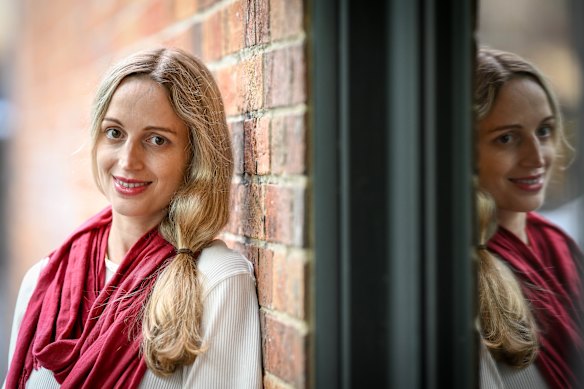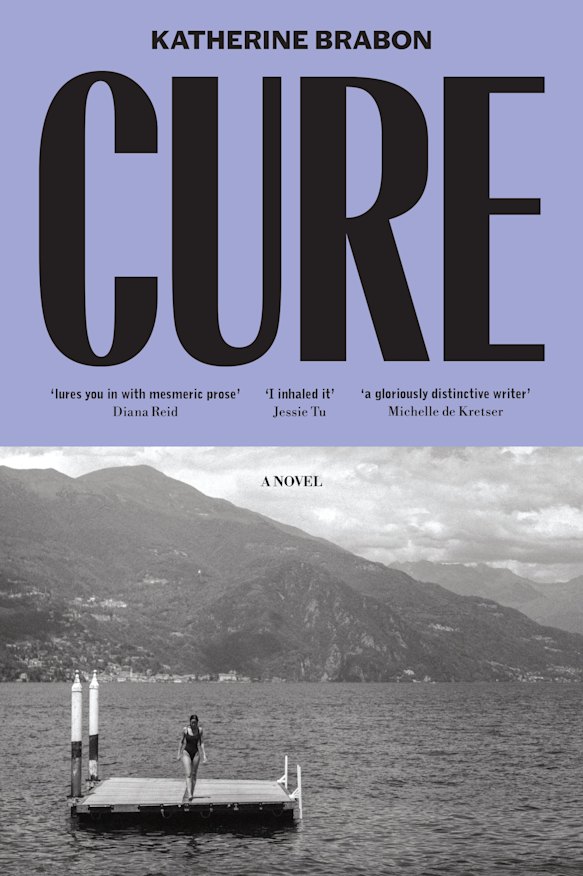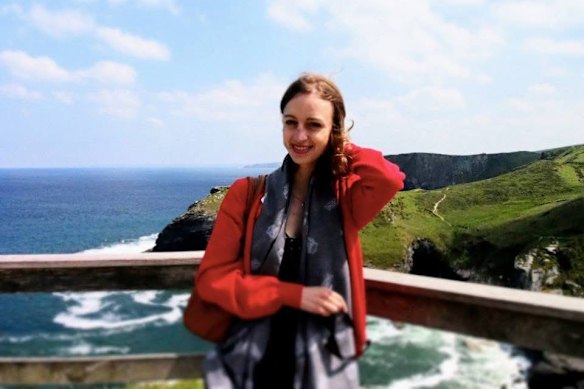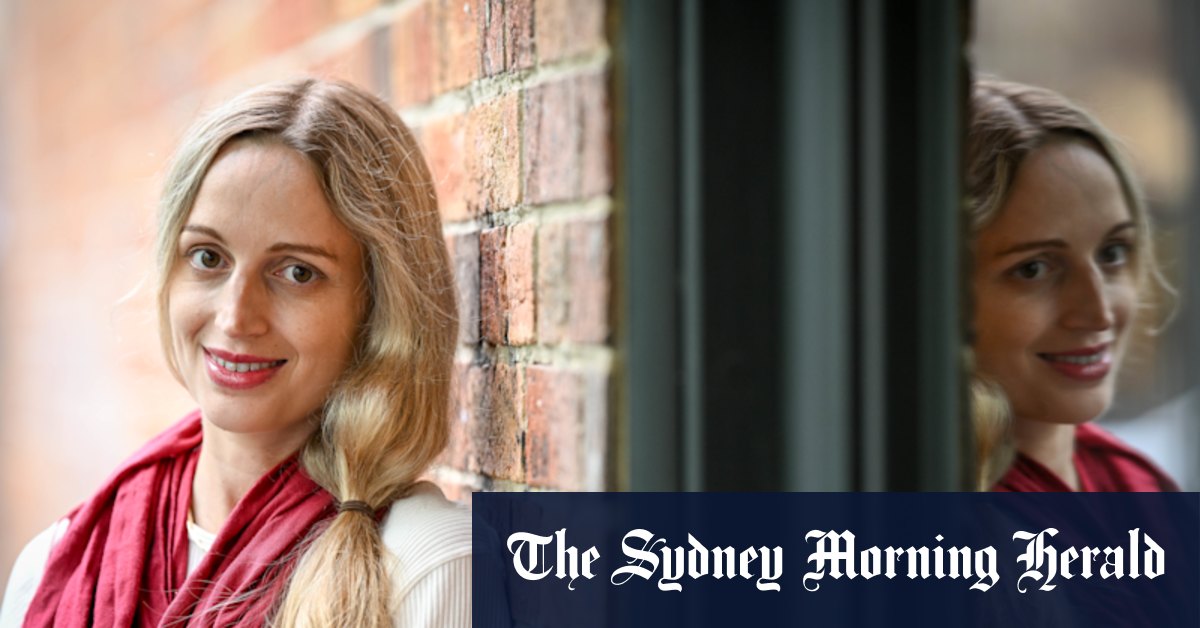Normal text sizeLarger text sizeVery large text size
I see myself there: an ancient site of healing, a soft Mediterranean breeze, an impossibly painless life, a cure. For some years now, I have read about a place called Cancelli, in the Umbrian hills of central Italy. My rational mind knows that a miracle cure is not possible for the disease that I have, but that does not stop the storytelling drive, which is perhaps also the drive of hope, from thinking otherwise. For centuries, the town of Cancelli has been a site of pilgrimage. Those suffering various physical ailments, particularly arthritis and sciatica, have visited a man named Cancelli – a sort of priest, artist, teacher, business owner – to be healed. Before this, pilgrims visited his family members. As the story goes, the healing gift was bestowed on the family by the apostles Peter and Paul, and later, an ancestor healed the Pope.
I have never been to this town, but I have thought about it often. To see ourselves as a different, hypothetical person, if only we could take ourselves out of our present lives and reach a faraway location, is not an unusual phenomenon. Seeking a cure as a chronically ill person sometimes feels like pursuing a distant, better self. What is it about such sites of healing, and the act of the pilgrimage, that still holds such power? What is it about the narrative of a cure that causes us to doggedly pursue it at all costs?

Katherine Brabon’s fourth novel is about illness and recovery. Credit: Eddie Jim
When my left knee began to ache and swell when I was 21, and the headaches I’d had since I was 16 – which traversed my neck up over my right ear, temple and eye – began to worsen and materialise weekly, I turned to both conventional and what might be called “alternative” therapies. For the ill person, naming can bring wild relief, grief in the face of both new and lost identities, and crucial medical acceptance as a gateway to treatment. When I was 23, I was given such names in the diagnosis of two overlapping autoimmune diseases – rheumatoid arthritis and ankylosing spondylitis – following surgery on my bad knee, a procedure that aggravated the inflamed joint yet brought about the final diagnoses. This naming felt like a life sentence and precipitated years of denial: I did not need the strong immune-suppressant drugs, I would fix this on my own, I would find “natural” ways to heal, it would not be forever.
I rarely used the word “arthritis”, even when strangers asked why I limped or what was wrong with my knee, perhaps partly because of my resistance to the meaning of the name, as I ardently committed to so-called “complementary” therapies, dietary cures and the stubborn refusal to ingest the immunosuppressant drugs prescribed by a specialist doctor.
Now I ask myself: What inspired the refusal of the diagnosis and the prescription to treat it? What drive was being enacted by the turn to complementary therapies?

Katherine Brabon’s fourth novel is Cure.Credit:
I was both wary of and reassured by the internet – perhaps I still am. It is easy to scoff at the targeted advertisements delivered by the algorithm and less so the personal narratives – often termed “anecdotal evidence” – that proliferate. It was comforting to read forums and blog posts written by those in a similar position. Their journeys of trying diets, supplements and complementary therapies offered granules of possibility. Possibility as hope. Possibility as a sense of control over chaos. This is not a story of wildly unbelievable cures pursued without common sense. It is not a narrative of following or preaching a medical hoax, though we know those exist too. There is, rather, a very human, very common story of a need to have some control over one’s body, life, illness, to have hope. To be told there was nothing to be done except take the medication was not something my younger mind could accept.
I am struck by the similarities between the ancient pilgrimage and the modern internet follower, both overwhelmed by the story of their illness, both seeking to rein it in by following a specific path. A diagnosis of chronic illness, incurable, particularly in a younger person, has an unbelievable quality. You have 60, 70, even 80 years of life ahead of you – a formless expanse of time that it is difficult to overlay with the new reality of chronic disease and disability.
The parallels between religious faith and faith in healing are apparent. I see this in how such faiths are often embodied in a person – the online followers as our modern-day disciples. I see this in the language we use and which blurs the divine and the scientific – the “miracle drug”. I am now a beneficiary of one of those miracle drugs, in a family of immunosuppressant treatments called TNF blockers and JAK inhibitors. They can save a person with arthritis from severe joint damage and lifelong pain. What is perhaps an even greater miracle is that I pay a small fraction of the true cost of this medication thanks to our state-subsidised medication scheme, the PBS.

Writer Katherine Brabon shortly after her diagnosis at 23.Credit:
American writer Meghan O’Rourke, in her book The Invisible Kingdom: Reimagining Chronic Illness, considers the turn to the “natural” approach of treating illness, or a turn away from medicine, as a sign that we are “in thrall to one of the most powerful contemporary Western delusions: namely, the idea that we can control the outcomes of our lives, in this case through self-purification”.
We see such narratives performed online in the so-called “wellness” world. If we just follow this particular lifestyle, diet, supplement and exercise regimen, we’ll feel renewed, cured. This is a particularly fraught terrain for the chronically ill person. We know that these prescriptions for life are not really “real”, but they comfort us. The more I write, the more I see narrative as a need for control – for good or ill. The cults of self-improvement and self-purification are powerful and create a strange internal battle in which the person with an illness thinks: what have I done, what have I not done? There are echoes of divine retribution. I stubbornly resisted medication in my 20s perhaps because I wanted to believe I could undo the wrong, take control over it. The results were catastrophic: severe joint damage, joint replacement surgery. It would be easy to look at this past self and shake my head, what an idiot, in the same way we might view anti-science healers, proponents of snake-oil cures. But throughout my ruminations on this past self – and I think of her a lot – and in my novels about the experience of illness, it seems that compassion is a more productive feeling than anger or regret.
Pain is incredibly singular. In its throes, you feel as though nobody else could understand.
The positive psychological impacts of the pilgrimage are very much real. A study of pilgrims to Lourdes in France, and another to Hindu pilgrimage sites, shows that pilgrims self-report improved quality of life or a greater sense of wellbeing upon their return. The authors of a study of such pilgrimages point to ideas of “shared identity” and “relationality and collective self-realisation”. This is thought to be something of a “social cure”. And though I have said that the online world is a fraught location for the ill, there are genuine places of a healing kind to be found. For me, this was in a blog post, written by a young woman in New York, living with a similar chronic illness to mine. I read her descriptions of her life as a young person with a chronic illness and saw myself. This mirroring of experience changed my conception of my illness. I wrote to her to thank her for such writing, and her reply precipitated one of my closest friendships to this day.
I am perhaps too stubborn and resistant to closed narratives to say I had “acceptance” as a result of this friendship, but her online and physical presence in my life (I’ve visited her several times over the past 15 years and been welcomed like family) has indeed been something of a social cure for an incurable disease.
Loading
While my body cannot cope without the life-altering medications that are available to me, and which I now gladly administer as a weekly injection, my mind, my sense of self, likewise cannot easily persist without some kind of representation of this experience. Pain is incredibly singular. In its throes, you feel as though nobody else could understand. I have come to understand that the surgeon and other specialists I see are not treating my experience of pain but the pain itself. They address the disease. The essence of the illness – what it is like to be me in this body – is separate from the discourse we have in the consultation room. The narrative of the illness, including the need for a cure of some form, is what the patient deals with when they leave the doctor’s rooms. The word “cure”, after all, comes from curare, to take care of – not necessarily to fix. That is perhaps why I continue to see the town of Cancelli in my mind, and I think about going there one day.
Katherine Brabon is an award-winning novelist whose latest novel, Cure, is out now.
